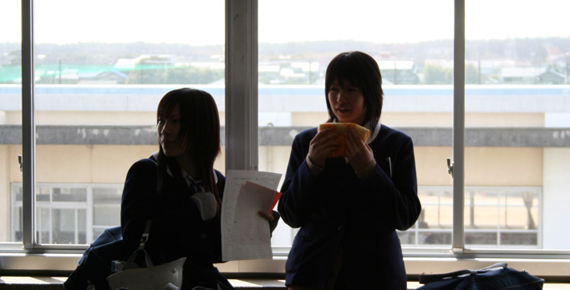 Photo: the duke in Japan
Photo: the duke in Japan
By Tracy Wang
In examining the variety of classes offered at institutions around the nation, I found some valuable information about the trends, both changing and consistent, in Asian American Film education. Although this is an informal survey, the findings below provide some interesting factoids.
- 60 universities and colleges that have Film Studies or Asian American departments with one or more classes focus on either an overview or a specific topic within Asian American Films
- The majority of these universities are located in coastal states with larger Asian American populations, such as California, Texas, and New York
- Institutions that offer the greatest variety of Asian American Film courses include Northwestern University in Illinois, New York University, and the University of California system
- The majority of survey Asian American Film classes typically involve the words Asian American, popular culture, film, and media in their title. The second most frequent grouping of words seen in these course titles includes race, performance, and Hollywood.
- The majority of Asian American Film classes are survey courses designed to introduce students to the study through topical issues and historical examination. For example, most of these classes focus on new topics each week, including gender, race performance, sexuality, immigration, family/generational changes, history of Hollywood, assimilation, and comparisons to other races.
- A specific course that Wellesley College offers covers Asian American women in film and media, while the University of California at Santa Barbara offers a course focused on Asian American men.
- Professor Julie Cho at UCSB teaches a rarely seen course titled “Asian American Documentary Practice.” Another important figure at UCSB is Professor Celine Parrenas Shimizu, who teaches the courses “Asian American Film, Television and Digital Media” as well as “Racialized Sexuality on Screen and Scene”.
- Northwestern University offers a class taught by Professor Nitasha Sharma on the topic of mixed-race Asian Americans, titled “HAPA Issues: Asian Americans of Mixed Racial Descent.”
- Professor Denton at Ohio State University offers a module in his class called “Asian Americans in Film” dedicated to Avant-Garde work, and in his classes references newly released films, including some featured at SFIAAFF. Another class not typically seen is “Immigrant Media,” taught by Professor Rodriguez at the University of Texas at Austin.
- Graduate courses generally go more in depth by focusing on a single module, often gender issues, or by taking a more critical approach to spectatorship and production in a graduate-level survey Asian American Film course.
- There is a variety of Asian American film professors in the University of California system. In addition to the professors mentioned earlier, Professor Beheroze Shroff at UC Irvine offers courses such as “Sexuality of Asians and Asian Americans in Film” and “Asian American Literature and Film Adaptations.”
- Digital Media is a field currently being explored by Professor David Keun Song at UCLA in his course “New Asian American Media.” At UC Davis, Professor Carlson offers a course entitled “Contemporary Issues of the Asian Transnational Adoption and Asian American Visual Culture.”
- The list of filmmakers usually taught and referenced in AA Film courses include Wayne Wang, Ang Lee, Alice Wu, Michael T. Uno, Christine Choy, Renee Tajima, D.W. Griffiths, Mira Nair, Kip Fulbeck, Greg Pak, Charles Brabin, and Richard Quine.
- Older films taught for historical context include Broken Blossoms, The Mask of Fu Manchu and The World of Suzie Wong.
- Narratives commonly seen amongst various syllabi include Chan is Missing, The Joy Luck Club, Who Killed Vincent Chin, The Wedding Banquet, Saving Face, The Namesake, The Wash, and Robot Stories.
- Other films that are related to CAAM that stand out among a few syllabi include Hollywood Chinese by Arthur Dong and Yours Truly, Miss Chinatown by Daisy Lin Shapiro.
- Though there are few narratives from recent years used to teach the modules, Professor Denton at Ohio State has an extended list of suggested films for his students to watch that include “Children of Invention” (2009) and “Deconstruction of a Korean Housewife” (2004).
Tracy Wang is a Bay Area native and Festival intern who frequents both films and class. You can e-mail her at twang@asianamericanmedia.org.




